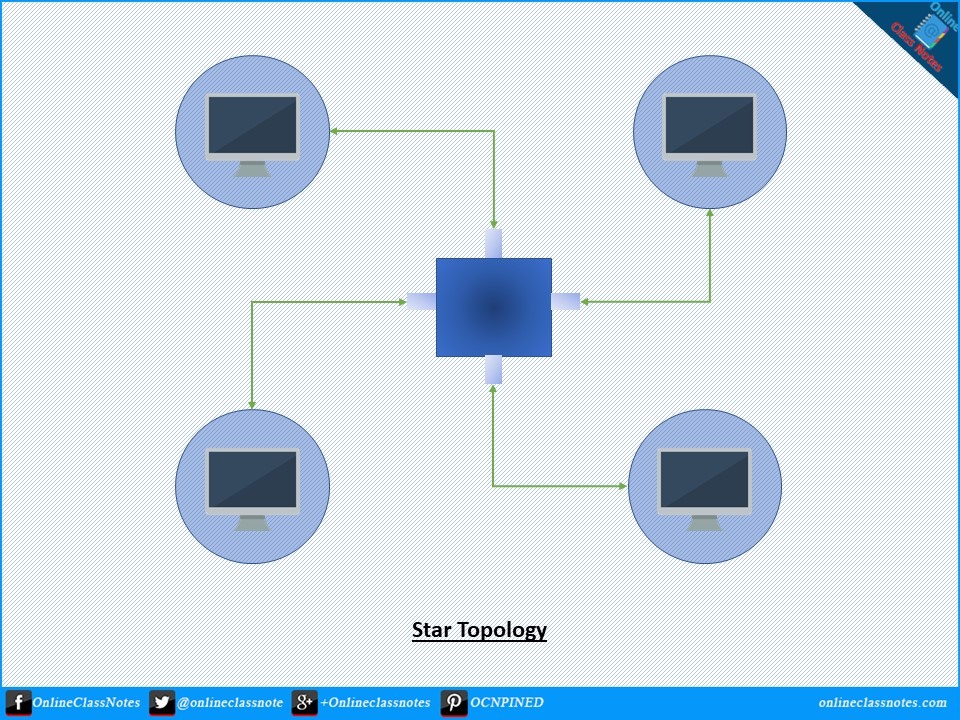Star Topology
Star topology is one of the four basic topologies of network communication. In this topology, all network devices connects to a controller or hub. This controller or hub enables communication among the network devices. Devices does not connect directly to each other as in Mesh topology. Each device sends data to another device through this hub. And when the hub receives a message, it relays the message to its destination device. As all nodes or devices connects a point, it is called an star topology.
In this topology, each devices requires one I/O for the network link. But the hub requires one port for each device. Thus we need more ports if we want to add more devices. However, in recent times, we can connect a hub to another hub to create a bigger network.
Usage:
In home networking or small office networking, we use this topology, where all the devices connects to a single router. This router then enables communication among the devices.
Advantages of Star Topology:
- Only n number of cables require for n number devices. This is a great advantage over the mesh topology
- As only one cable requires per device, therefore, a device requires only one port for linking
- Cost effective
- It is easy to identify faulty link and fix that
- Robust as a faulty can not incapacitate the whole network
- Easy to install, uninstall and configure network devices
Disadvantages of Star Topology:
- The whole network depends on a central point, if the hub goes down, the network goes down
- Star topology still requires a lot of cabling in comparison to other topologies such as ring or bus topology
- Traffic overload can occur as a result of multiple devices sending data to the same device
You can read more about this topology at the wikipedia page.
